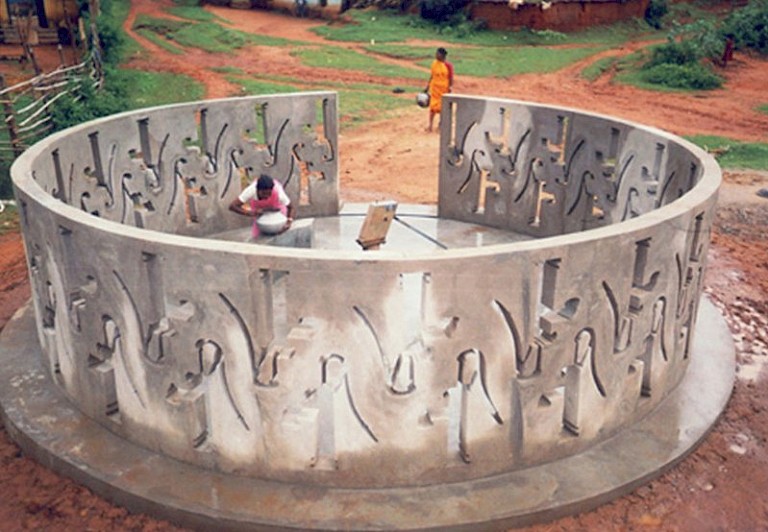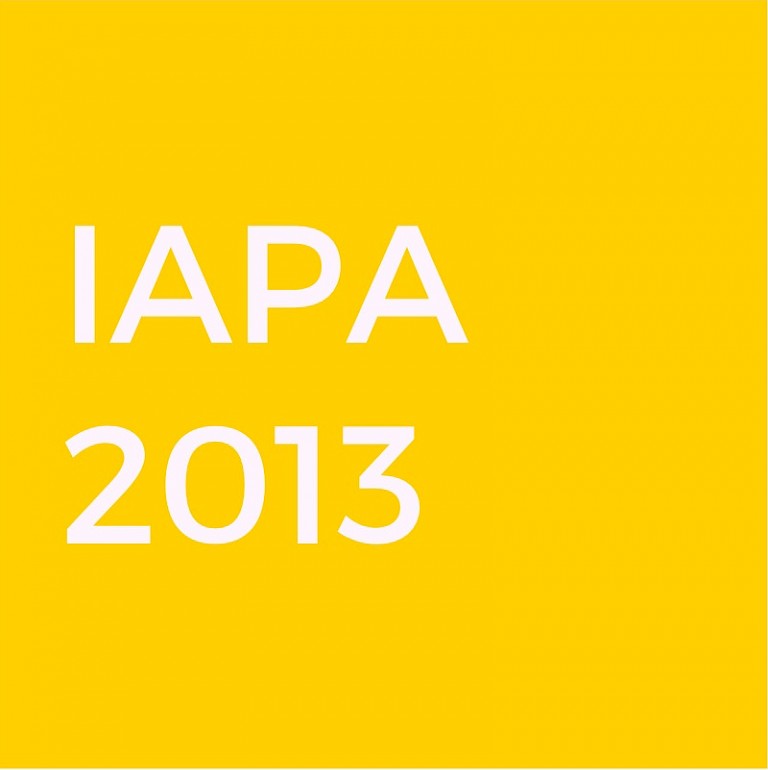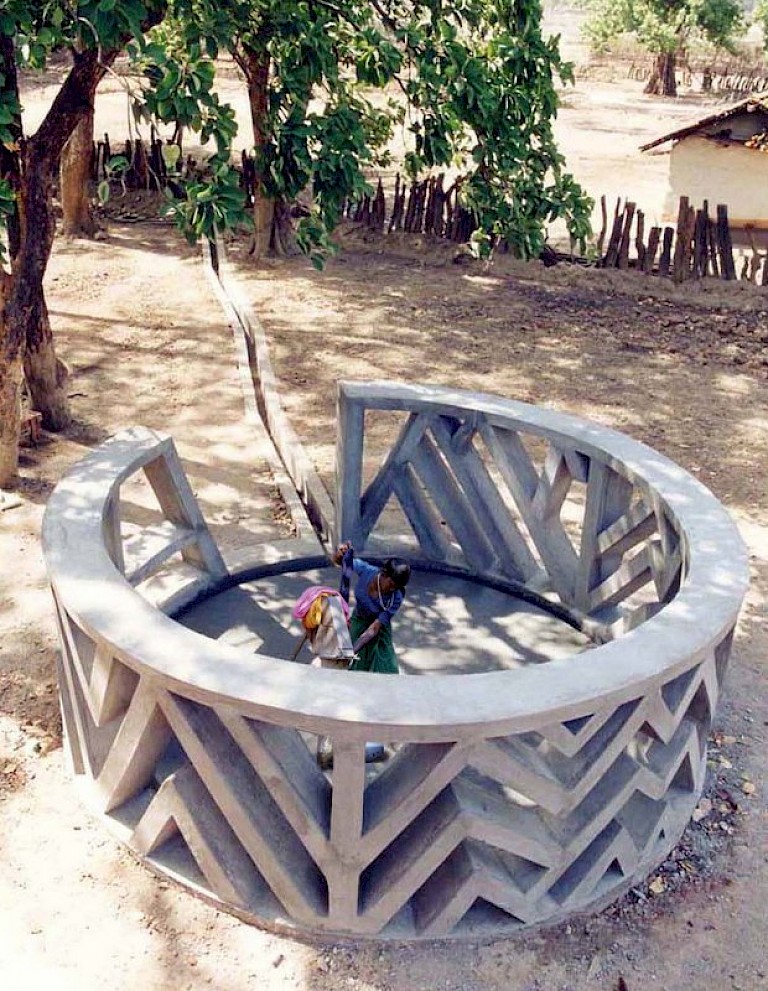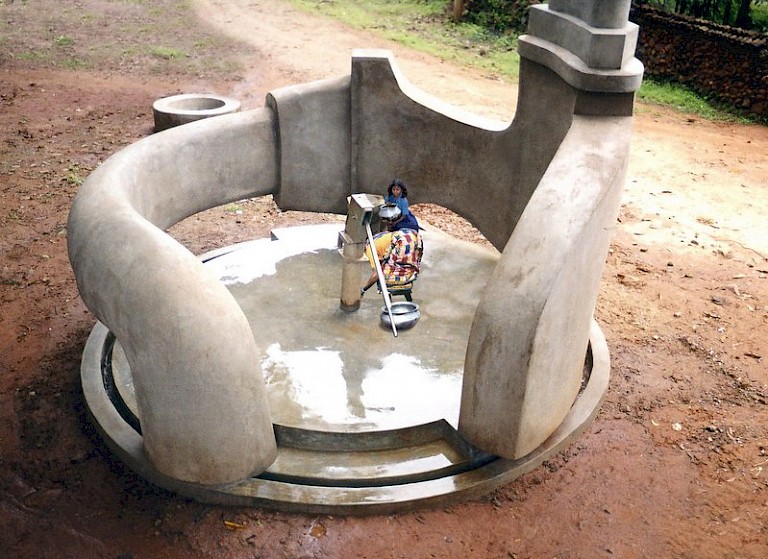



Pilla Gudis, literally “Temples for Children,” are spaces where the young may gather to play and engage with each other, outside formal schooling structures and processes. They also act as sites for non-formal art workshops and activities for immersion in Adivasi traditions, and function as spaces where dialogues may take place concerning local beliefs and practices in relation to other existential realities, such as those of surrounding cities and the activities of private firms encroaching on Adivasi land and water rights. Such non-formal learning sites are important because, in contrast to schools which privilege intellectual or cognitive knowledge acquisition, the Pilla Gudis and associated art workshops foster the acquisition of aesthetic knowledge, that is to say, learning in relation to sensory experiences. Like the Nalpar project, Pilla Gudis involved extensive cross-cultural collaboration and dialogue. Significantly, opportunities were created for non-tokenistic involvement of children. The Kopaweda Pilla Gudi depicted in the attached images was, for example, based directly on the drawing of Somnath, a 9 year-old child from the Kopaweda neighborhood. The other Pilla Gudis were likewise based on children’s drawings.
While these two strands of Altaf’s decade-long practice have produced outstanding object-outcomes in the form of the Nalpar and Pilla Gudis, and led to the creation of a financially self-sustaining arts organization, the Dialogue Interactive Artists Association (DIAA) in Kopaweda, the object-outcomes are by no means the chief emphasis of these public art projects. Equally important are the learning experiences that have taken place for Altaf and her Adivasi artist-collaborators, as well as for the local communities, and the dialogues, conflicts and negotiations that have led to ongoing social transformations in the Bastar region. As Altaf is at pains to highlight, dialogue, interaction and collaboration lie at the heart of this practice. Given that meaningful dialogue and collaboration takes time, in this case, well over a decade, it is difficult to “fit” the entirety of Altaf’s public art into the stipulated timeframe of the Award (January 2006 – September 2011). Instead, it should be considered that significant placemaking outcomes (e.g. beneficial changes in the daily experiences of place among local communities, particularly Adivasi women and children) took place within the timeframe, even though the project itself exceeds the timeframe at both ends.
All copyright belongs to Shanghai Academy of Fine Arts, Shanghai University.



